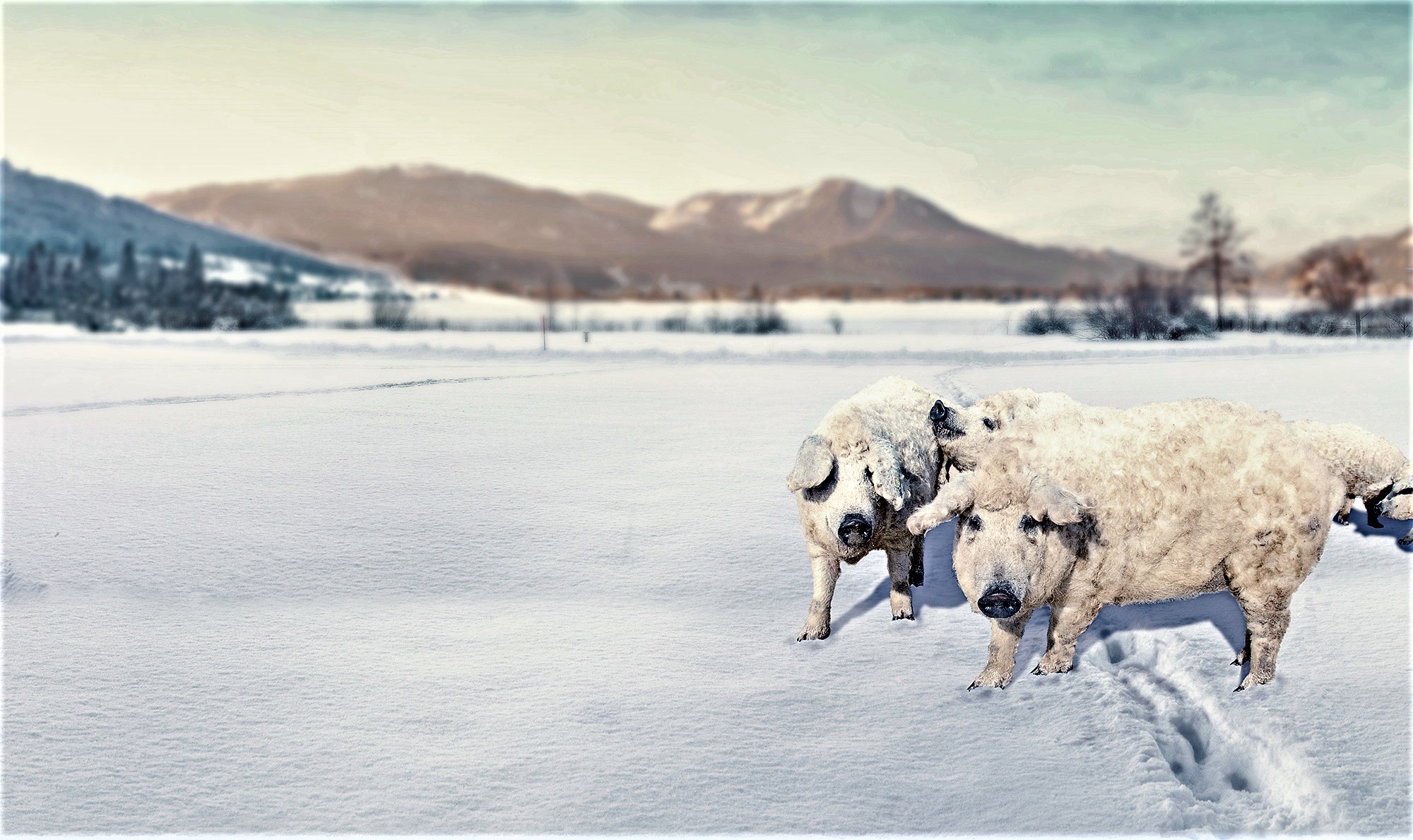Spelled mangalica. It is read mangaliza. This is the Hungarian pig breed that produces exceptional cured meats and one of the world’s finest white meats. Loved by international chefs and increasingly expensive. As if that were not enough, it has survived the pandemic almost unscathed. The price has doubled, indeed, due to growing demand from every corner of the planet. Italy is no exception, where the so-called “kobe” or “wagyū of pigs” is chosen as the breed for breeding and processing.
Not surprisingly, Péter Tóth is gloating in his office in the centre of Debrecen. Hungary’s second largest city, on the eastern border with Romania and Ukraine, is home to the headquarters of Moe, Mangalicatenyésztők Országos Egyesülete. The National Mangalica Breeders’ Association, of which he is president.
The walls of the studio, dotted with maps and place cards indicating the countries conquered by Mangalica exports, tell at least half the story. The rest is done by the dozens of miniature pigs – made of porcelain, plastic and even soft toys – that Péter Tóth jealously collects.
«This one comes from Australia», the president of the Hungarian breeders proudly shows, pointing to the intact label of a Mangalica pig that looks almost real, so careful is the reproduction of the long hair like that of a sheep, typical of the breed.
«’Item number 88674′ – he insists, scrutinising the heirloom – and it also says “Hungarian pig”. Everyone knows by now that the Mangalica is our pig, and that’s how it is. Even in Australia, of course». Miniatures that are great little trophies.
If Péter Tóth can now afford to collect piglets on the shelves of his office in Debrecen, it is thanks to the foresight and perseverance he showed in the early 1990s.
The current president of Hungarian pig breeders can be considered the man who saved the magical breed from extinction. Over the years, he has turned the breed into an engine of the Hungarian economy. As well as a national monument to biodiversity.
THE STORY OF THE MANGALICA – THE HUNGARIAN PIG SAVED FROM EXTINCTION
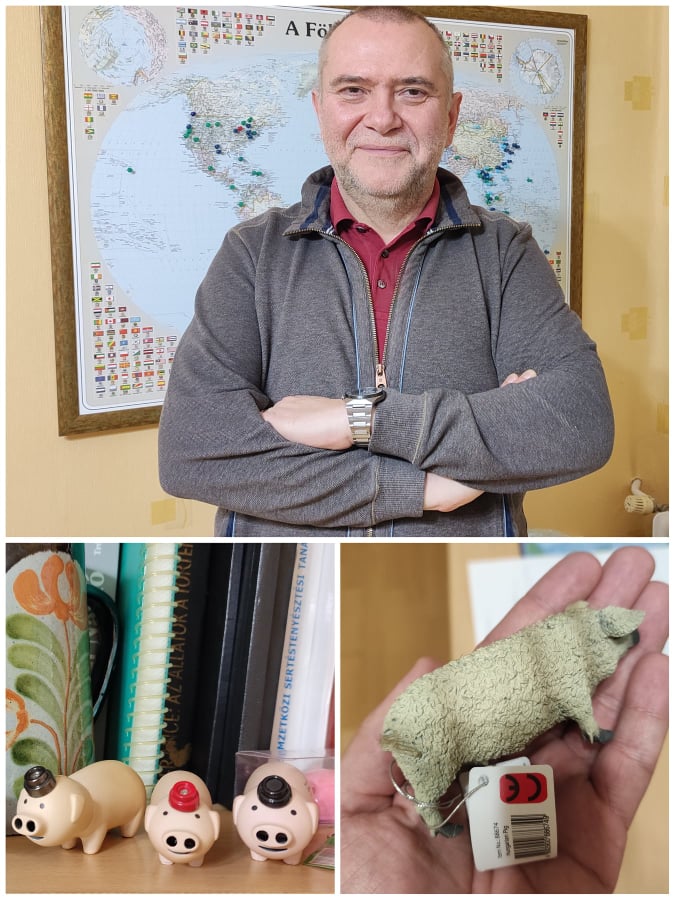 The background to the success story of the Mangalica is Hungary in the 1990s. A starving country. Recently freed from Soviet domination and the communist bloc, like other nations of the infamous Warsaw Pact.
The background to the success story of the Mangalica is Hungary in the 1990s. A starving country. Recently freed from Soviet domination and the communist bloc, like other nations of the infamous Warsaw Pact.
It was the time of the “Democratic Package”. A wave of liberalisation that opened the doors of Budapest – not yet those of the much more backward countryside – to the West. It was not by chance that McDonald’s set foot in the heart of the Hungarian capital in those years, opening its first fast food restaurant in Vörösmarty tér.
The letter that changed the history of the Hungarian pig also arrived from the other side of the continent. «In 1991 – Péter Tóth tells winemag.it – I was contacted by Juan Vicente Olmos, still director of one of the most prestigious Jamón Serrano producers, Monte Nevado. He was looking for top quality raw material. Mangalica immediately came to mind».
The high intramuscular fat content is what makes these pigs special. A rare characteristic, perfect for the production of cured meats such as Serrano. The Spanish request was the key to the modern history of the Hungarian pig.
«I put advertisements in the newspapers – Péter Tóth explains – and received dozens and dozens of letters within a few weeks. Most of the remaining mangalica were privately owned. When I arrived at the place to pick up the animal, most of the time I found that it was gone. The family had already eaten it in the meantime, as it was their only source of income».
It was a challenge for Tóth to collect around 200 animals. Painstaking, patient work. Heroic. It lasted until 1994. In 1994, together with a handful of “enlightened” local businessmen and university scholars, he founded the first mangalica breeding centre in Hortobágy – in the heart of the Hajdú-Bihar region, some 40 kilometres from Debrecen.
MANGALICA, THE HUNGARIAN ‘SHEEP PIG’ BREED
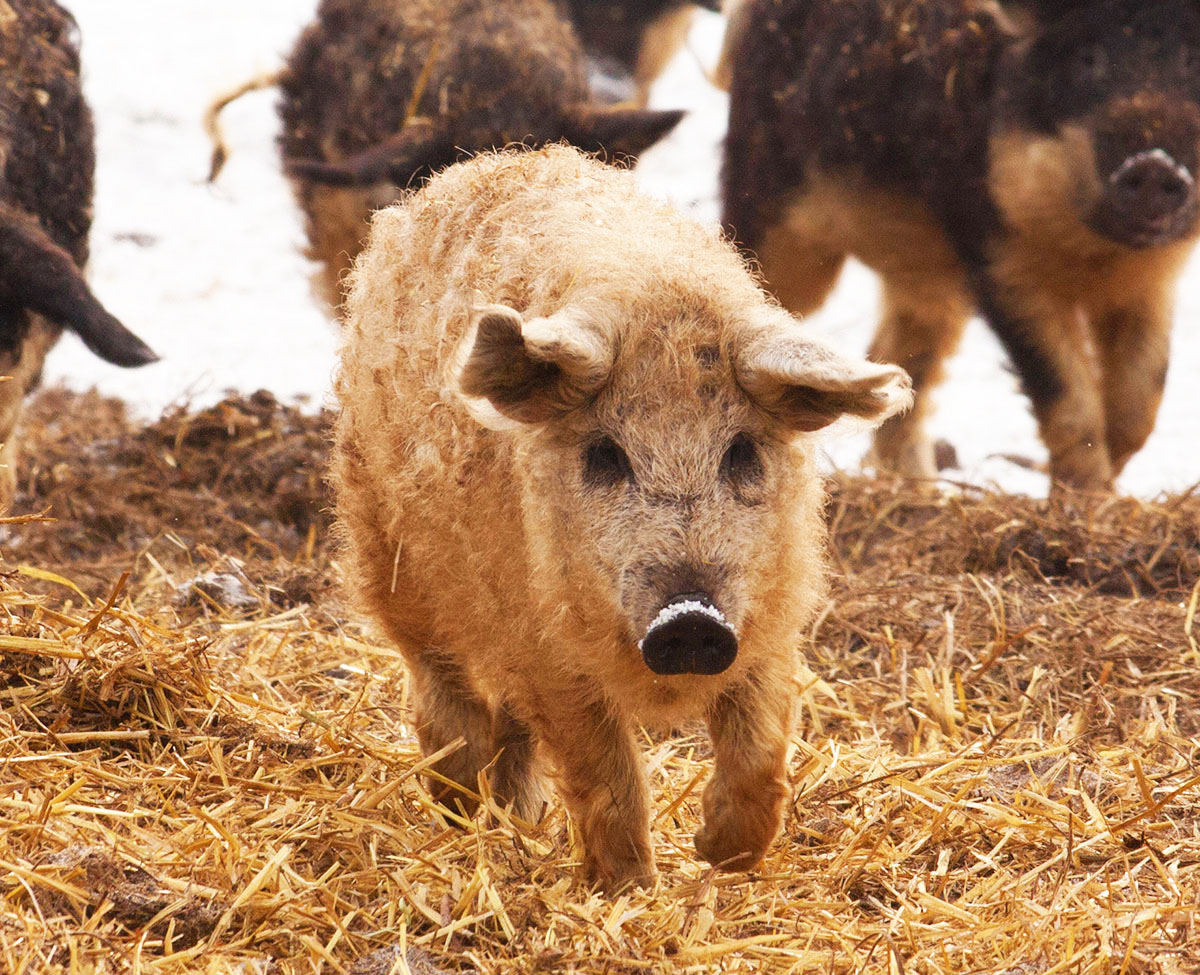
The group led by Péter Tóth soon caught the attention of the Hungarian government. Between Péter Boross’s lightning-fast term in office and the longer term of Prime Minister Gyula Horn (1994-1998), Hungary realised that it had a golden ticket, the Mangalica.
But it was under Viktor Orbán, in 2004, that the ‘pig-sheep’ was officially recognised as a ‘national biodiversity heritage’ breed. European Union began to make substantial contributions to the preservation of the species. The Mangalicatenyésztők Országos Egyesülete, the National Association of Mangalic Breeders, which today comprises 110 companies, is the mediator.
The 2009 New York Times article entitled “The next Big Pig” about the Mangalica helps small Hungarian farms expand their business through exports. The breed became very popular not only in the Usa, but also in the East. The Japanese, who are among the people who have best understood the similarity of the Hungarian pig to prized beef, such as Kobe and Wagyū, are very fond of it.
«Today – Péter Tóth points out – it is difficult to find a country where Mangalica meat has not yet arrived. This success has driven up the cost, even during a pandemic. In 2021, mangalica doubled in price per kilo. It has become, according to many, the world’s most prized pork. The choice of chefs and many national and international celebrities».
MANGALICA MEAT AND SAUSAGES: ITALY IS NOT STANDING IDLY BY
The work started by Péter Tóth at the beginning of the 1990s, starting with just 200 pigs, has more than paid off. In addition to national and international prestige, the 110 companies that make up the National Mangalica Breeders’ Association control a herd – first and foremost genetic – of around 9,500 thousand females.
Annual production is guaranteed by around 15 thousand fatteners, destined for slaughter. Animals that, when alive, cost a third of the cost of breeding pigs: 500 euros, compared to 1,500 euros for a female.
«The turnover – explains Tóth – is 2% of that of ordinary pork in Hungary. What makes us special, apart from the quality, is the artisan dimension of the companies. We are the Rolex, Bentley or Lamborghini of the industry!
And we don’t want to grow more than that. In the next 10 years, according to the most prosperous forecasts, we could double the number of animals. But we are still a long way from the industrial proportions of international pig farming».
History, fascination, revenge and, above all, the future, which also interests Italy. Just ask Carlo Dall’Ava, owner of the Dok Dall’Ava Prosciuttificio in San Daniele del Friuli, a town known throughout the world for the production of the Dop prosciutto of the same name.
The company’s latest project speaks Hungarian and is called, not surprisingly, Hundok. A cured meat product made from Mangalica pork legs. «A pure breed since 1700 – the entrepreneur tells winemag.it – reared in the Magyar plains for about 16 months».
«This pig, so hairy that it resembles an obese sheep – continues Dall’Ava – has such a high oleic acid content that it can be compared to Spanish ham. The ham obtained from this meat is truly incredible.
It literally melts in the mouth, giving a unique sense of sweetness. After all, the Mangalica is the father of European pigs. The Hungarians were the butchers of the Roman Empire».
«If they’re bred well, 6-10 pigs per hectare don’t smell and also keep the woods tidy. I discovered this thanks to my friend Antal Baumgartner, father of the first Hungarian Formula 1 driver, Zsolt Baumgartner.
He let me taste it for the first time and I immediately fell in love with it. So I started importing it, creating the ham that celebrates this extraordinary breed. It’s an animal for those who understand charcuterie, i.e. for those who love fat!».
MANGALICA IN ITALY: THE PALUCCO FARM PROJECT IN ASTI
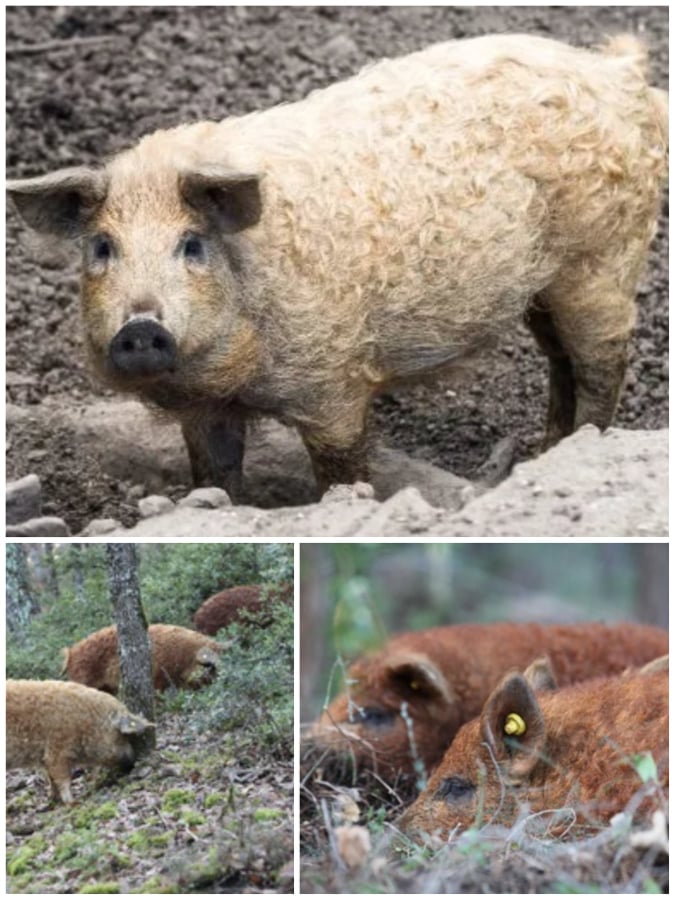 Among the breeders of Mangalica pigs from which Dok Dall’Ava obtains its supplies is the Rodaro Paolo Winery in Spessa (UD). A “fashion” that seems to be infecting the most vocated Italian wine lands, as demonstrated by the newborn project of Assunta Maraventano, in Asti. It is called Fattoria del Palucco and takes its name from the town in the well-known wine-producing area of Piedmont.
Among the breeders of Mangalica pigs from which Dok Dall’Ava obtains its supplies is the Rodaro Paolo Winery in Spessa (UD). A “fashion” that seems to be infecting the most vocated Italian wine lands, as demonstrated by the newborn project of Assunta Maraventano, in Asti. It is called Fattoria del Palucco and takes its name from the town in the well-known wine-producing area of Piedmont.
«The ribbon cutting ceremony – explains the owner – is very recent, having taken place on 11 January 2022. The company was born out of a passion for good food: something closely linked to the quality of the raw materials. Not least the meat». Twelve hectares are available for the new farm, entirely dedicated to Mangalica pigs.
«To start the project – explains Assunta Maraventano – we bought two boars and four sows, capable of producing 5 or 6 puppies per litter. The initial idea is to increase the number of animals, proceed with selection and sell meat, salami and sausages».
The lucky specimens of the ‘Mangalica piemontese’ live in a semi-wild state, between double fences and an electrified belt that prevents entry and contact with wildlife. They feed on acorns, chestnuts and hazelnuts, which are naturally present on the estate.
«It will never be an intensive farm – says the owner – and we will never use non-natural feed. As well as foraging for their own food in the woods, we supplement their diet during the cold months of the year with fresh seasonal fruit and vegetables and cereals. They are wonderful, gentle pigs that children can even play with».
KÖVÉR TANYÁ, A MODEL FARM IN HUNGARY
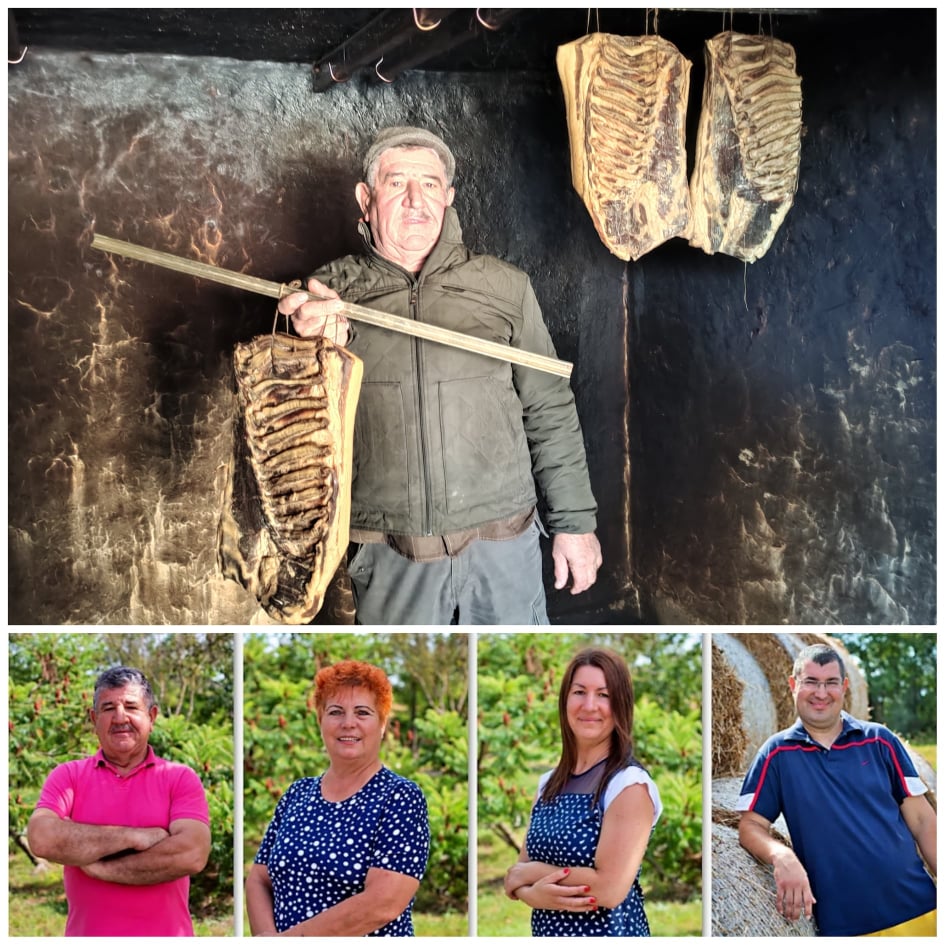 While Italy seems to be moving towards an open-farm model, with Mangalica pigs as the visible (and tangible) protagonists of a project that embraces storytelling and “experiential gastro-tourism”, in Hungary it is not so obvious to find farms that open their doors to visitors. Even less so to the press.
While Italy seems to be moving towards an open-farm model, with Mangalica pigs as the visible (and tangible) protagonists of a project that embraces storytelling and “experiential gastro-tourism”, in Hungary it is not so obvious to find farms that open their doors to visitors. Even less so to the press.
This is certainly not the case at Kövér Tanya, a family-run farm that has won many national and international awards for the premium quality of its meat. The owner, Zoltán Kövér, was born in 1959 and is now joined in the business by his wife Rózsa, daughter Kriszta and son Zoltán Jr.
The company he runs in Tetétlen, a village of a thousand souls about fifty kilometres south-west of Debrecen, is one of the symbols of the “Hungarian miracle” called Mangalica. Zoltán Kövér tells winemag.it over a plate of succulent cured meats: “I’ve had many jobs in my life. In the meantime, I was fattening up and selling about 200 pigs a year to slaughterhouses. In 2005 I decided to set up my own business».
A year that is no coincidence, given the recognition of Mangalica as a ‘national heritage’ product in 2004. Kövér Tanya soon became a flagship of the Hungarian Breeders’ Association, chaired by Péter Tóth. Today it has 21 hectares of pasture where pigs can roam freely. And the number of Mangalica sows has increased from 20 to 60.
Zoltán “Zoli” Kövér is proud to say: «What sets us apart is the craftsmanship of our production. We are a company equipped with the best technological devices. But what is most important to us is the well-being of our animals and the preservation of the authentic flavours of Mangalica meat and sausages, without any additives that are harmful to health. The market knows and appreciates us for this».
THE ANNUAL MAGALICA FESTIVAL
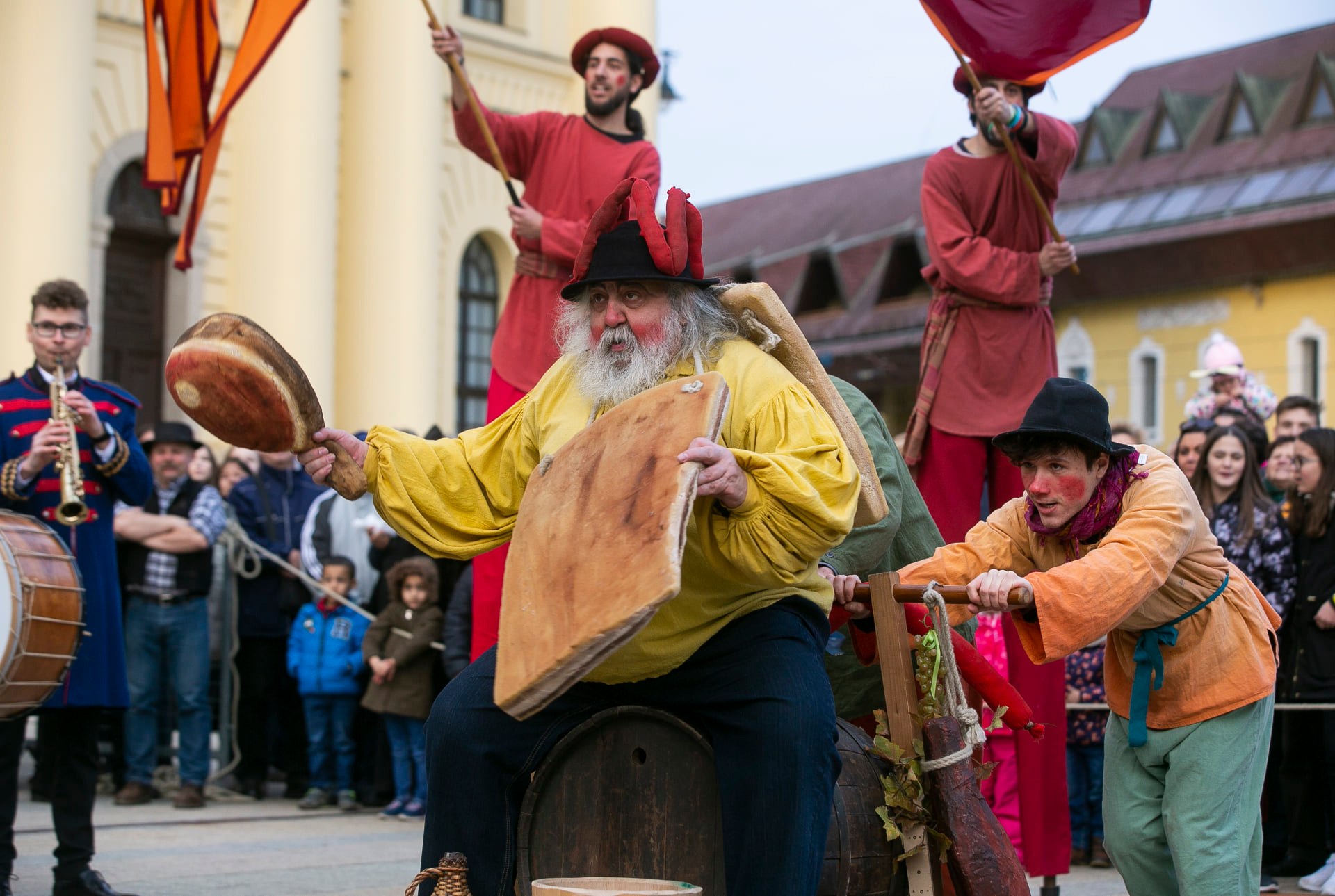
If there is a special appointment to get to know the many nuances of the Mangalica breed, it is the Mangalica Festival. It takes place annually in Debrecen and Budapest, the two cities that symbolise the rebirth and rediscovery of the Hungarian pig.
The 11th edition will take place from tomorrow, 25 February, in Debrecen, with free entrance from Kossuth Square. Calendar is packed with events, running from 10 am to 10 pm, until the event’s closing day on 27 February.
There is more time, however, to get organised for the 15th Budapesti Mangalica Fesztivál, scheduled in the Hungarian capital from 18 to 20 March 2022. Here, too, entry will be free, from Szabadság Square. But the Hungarian pig is also the absolute protagonist of the dishes served by many restaurants in the two Hungarian cities.
The latest to be added to the list – it opened less than a year ago – is DG Italiano Debrecen, a pizza restaurant created by Mario De Stefani, a restaurateur originally from Bari, together with his Hungarian wife Zsuzsa Szanka.
«I’ve been living in Hungary for 15 years – he explains to winemag.it – and I know the Mangalica pig well. It gives a very tender meat with a delicate flavour, sweeter than that of the common pig. The Hungarian palate likes it very much and it fits perfectly on our Italian menu.
We serve it in two versions: one on the bone, for the classic rib eye, obtained using the Sous Vide technique and enriched with a mushroom sauce. The fillet is made even more delicious with a gorgonzola sauce, which is proving very popular».
DEBRECEN AND BUDAPEST: THE RESTAURANTS TO FALL IN LOVE WITH MANGALICA
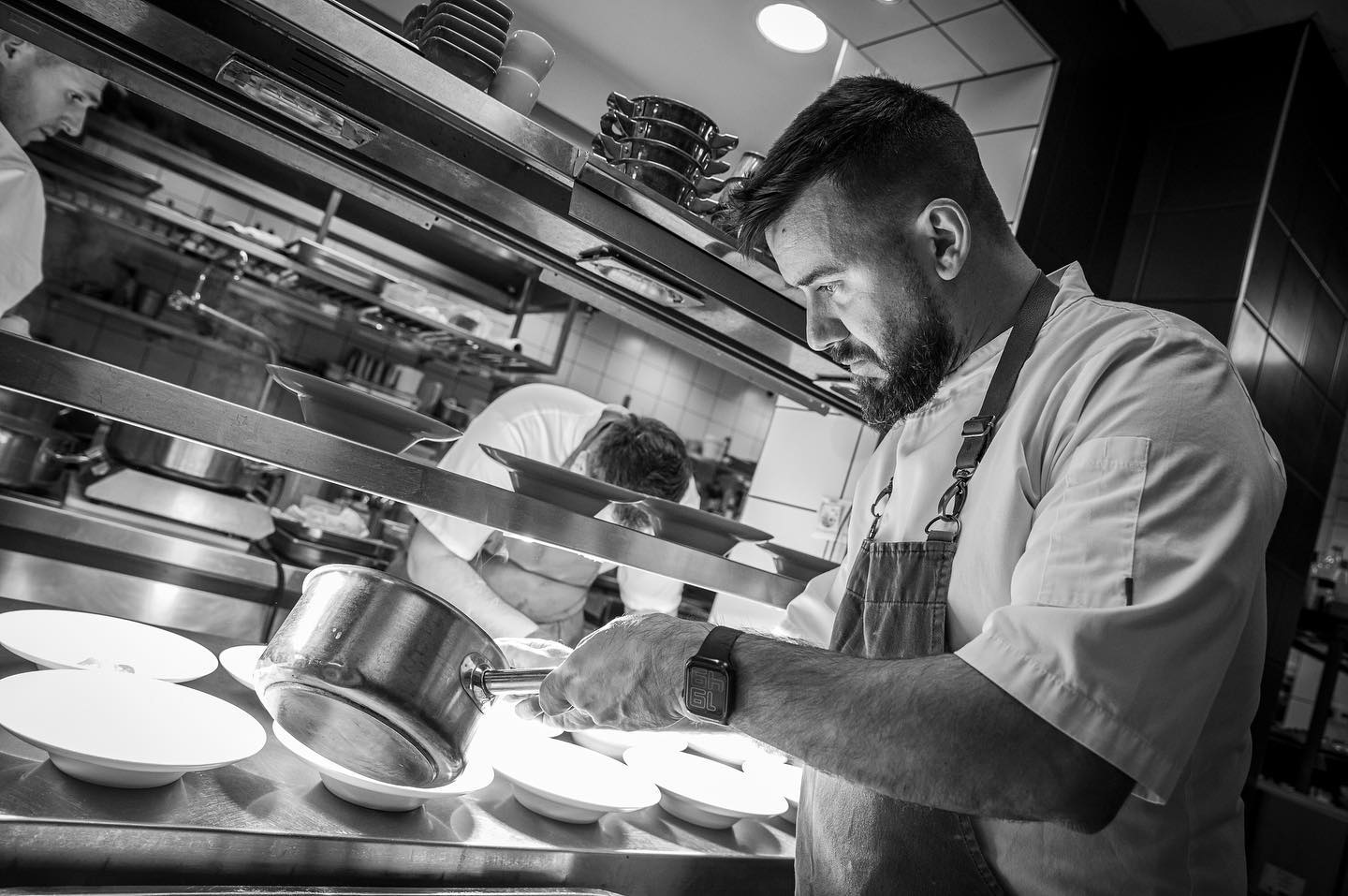
For a Magyar take on mangalica, the place to go is Ikon Restaurant and Lounge Debrecen. This is the city’s most chic restaurant. A trendy location that would not be out of place in an international food capital such as London, Paris or Milan, without disturbing more distant destinations.
Ikon is the home of one of Hungary’s youngest and most promising chefs, Adam Thür (pictured above). The restaurant’s philosophy is the «promotion of small local producers and quality ingredients», including mangalica. Try, above all, the dish “Mangalica Brassói” by Ikon.
There is also no shortage of opportunities in the capital. In Budapest, there are countless mangalica temples. And they range from the most local interpretation to fusion, the result of contaminations that are anything but obvious.
Don’t miss the mangalica interpretations of restaurants like Gundel (crispy mangalica ribs with mashed potatoes and shallot ragout) or Tiago & Éva Essencia (mangalica, coriander, “açorda”, clams, in a curious Hungarian-Portuguese marriage).
Or that of Larus (Trilogia Mangalica, roasted cauliflower, black salsify, beetroot) or the brand new Umo Restaurant & Bar Budapest, where Hungarian-bred pork is the concept of Colombian chef José Guerrero (“Mexican Mangalica” is a grilled chop with Mexican sauce and spicy pineapple). Enjoy your meal.
